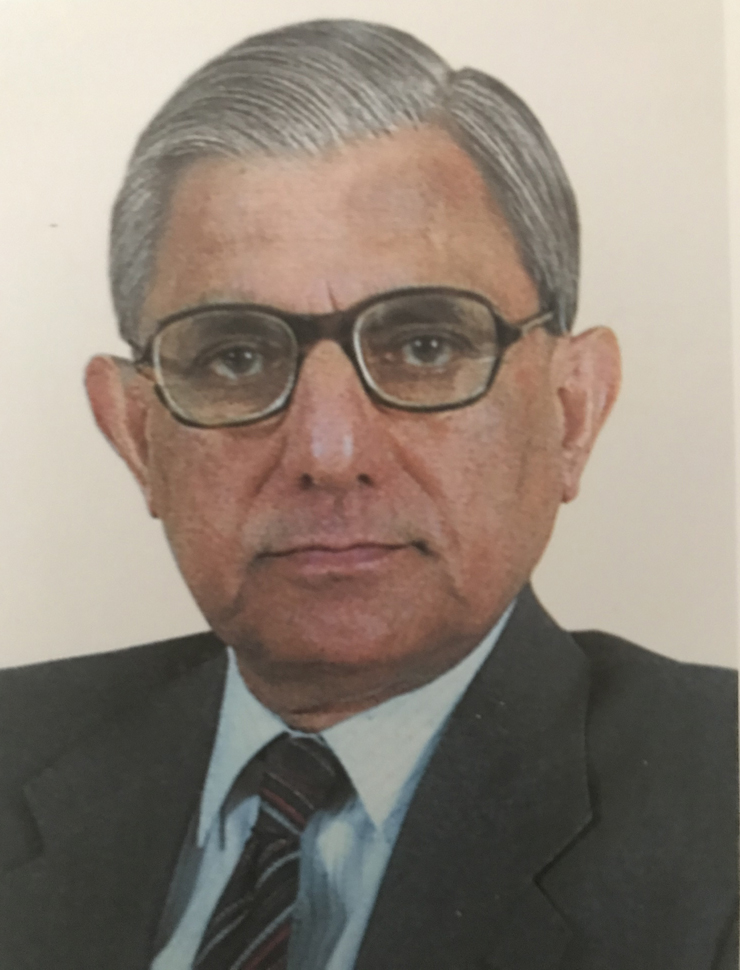Registered with the Registrar of Newspapers for India under R.N.I 53640/91
Vol. XXX No. 10, September 16-30, 2020
Remembering R.J. Shahaney
by Sushila Ravindranath

With the passing away last week of Ram J. Shahaney, Chairman Emeritus, Ashok Leyland (AL), an era comes to an end. An era of giants of automobile industry who were not bogged down by the restrictions placed on them by a Socialist government. The bureaucrats seemed to have had no clue about the demands of an industrialising nation. Shahaney had the audacity to think big even in those difficult times. He knew that AL could not be constrained and had to grow.
Ashok Leyland, the country’s second largest commercial vehicle manufacturer, was set up in 1954 in Madras. Raghunandan Saran, a freedom fighter from Punjab was asked by the then Prime Minister, Jawaharlal Nehru, to start a commercial venture. He was given a license to manufacture Austin cars in Punjab. He had already been negotiating with British Leyland to launch a commercial vehicle unit. This became reality in 1954 with state government and institutional support.
Leyland became a partner. Ashok was the name of Saran’s son and the company was named Ashok Leyland.
AL had British managing directors in the early days. Shahaney was the first Indian MD who joined the company in 1978. A mechanical engineer who grew up In Calcutta, he worked and trained in the UK. He returned to India to work for Jessops India, a public sector company, which among other things manufactured wagons.
Old timers recall that in those early days Shahaney was seen as the last of the English managing directors. He was of the stiff upper lip type, a workaholic and led by example. And working in Madras could not have been easy for him in the early days. He was an outsider in a city where big business was dominated by family groups who were close to each other. However it was because of AL that groups like the TVS moved to Chennai to start auto component manufacturing. Together with AL, they laid the foundation for Chennai to become one of the major auto hubs in the world.
Shahaney played no small role in this. He operated during the license permit raj. Companies were told how many vehicles they could produce. It was not easy to raise finance. AL’s competitor was Telco, now Tata Motors. At that time AL manufactured 12,000 vehicles to Telco’s 40,000. Telco was clearly the big brother. That did not faze him. He pushed for expansion to 15,000 commercial vehicles. There were industry people who thought he was foolhardy.
Shahaney’s passion was technology. He understood finance equally well. AL under him became a pioneer in coming out with new products, new technology. The company was the first to introduce air brakes , multi-axle trucks and many others in the country. It was thought of as quite revolutionary then. Shahaney tied up with Hino Motors of Japan to upgrade the engines.
When the government started relaxing a bit, he planned AL’s expansion into Hosur, Alwar and Bhandara. This was considered a disastrous step then. He saw the future and took the right decision.
I met him some time in the mid 80’s. The magazine I wrote for, was very keen on doing a feature on the company. AL was not media friendly. For that matter, no company in Madras was. I was warned that Shahaney was inaccessible. His very polite secretary would put me off by saying he was busy. This was actually true. He was working 18 hours a day and was travelling to Delhi at least 3 days a week. Every serious businessman had to do the Delhi trek then. I ran into him at an industry event, introduced myself and asked for a meeting. He was amused at my persistence. He said he would tell his secretary to fix up a date. So I finally ended up meeting him to discuss a feature on the company.
It was always a great experience talking to him. His knowledge on the industry was encyclopaedic. I still remember him explaining the difference between a Leyland truck and a Telco truck, basically the difference between Leyland and Mercedes Benz technologies. And how his vehicles were better for Indian roads. He always held that unless the government put money in road building and infrastructure, the automobile industry won’t grow. He was against AL entering passenger cars. Whatever I know or understand about the automobile industry, I owe it to him.
We did many other features on Ashok Leyland after that. One of the most exciting was in 1987, when the company was about to change hands. Most British companies were on the decline then. British Leyland was no exception. It put Ashok Leyland on the block. There were many contenders. Every takeover tycoon of those days was after it.
The Chhabria, Mallya names were bandied about. Rahul Bajaj was a serious bidder. The then rather mysterious Hindujas were also in the running.
I am sure Shahaney was part of the process but he was not saying anything. Bajaj was the hot favourite, but the Hindujas finally got it. Shahaney continued to lead the company. Ashok Leyland is today one of the world’s largest commercial vehicle, truck and bus manufacturers in the world. All thanks to Shahaney’s vision and the foundation he laid. For all his achievements he remained a man of few words, non-flamboyant and never seeking publicity.
He headed Hinduja group projects, helped them navigate the labyrinthine ways of Delhi after he stepped down from AL. He was made Chairman Emeritus. He continued to keenly follow the automobile industry.
Shahaney leaves behind his gracious wife Sunita. He will always remain a Chennai icon.

